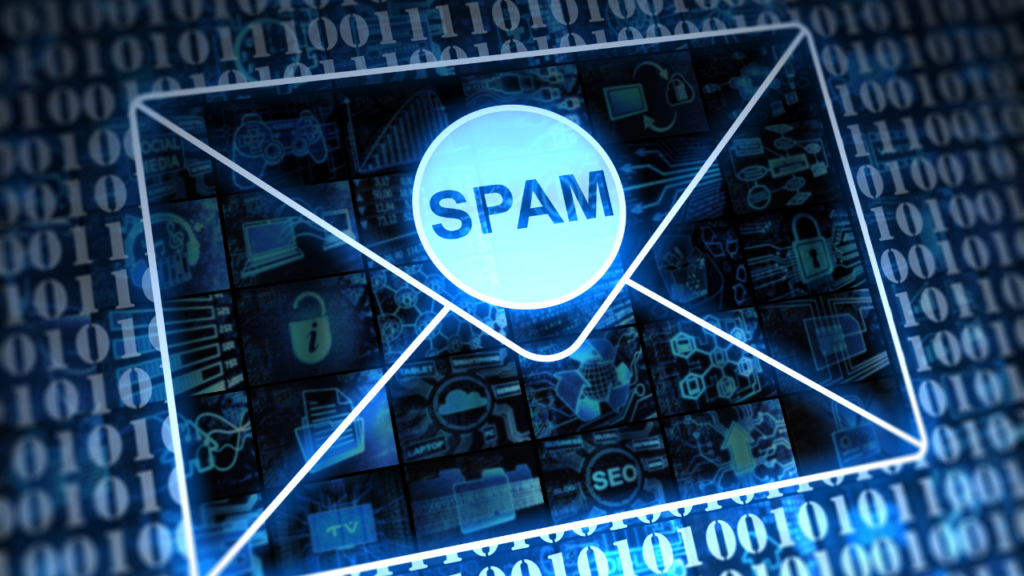Email campaigns play a vital role in strengthening your customer relationships and driving sales. By understanding the different types of email campaigns, you can effectively engage your audience and cater to their needs. From welcome emails to promotional offers, this guide will help you identify which campaigns will yield the best results for your business. With the right strategies in place, you can harness the power of email marketing to enhance your brand visibility and build lasting connections with your customers.
Key Takeaways:
- Welcome Emails: These are vital for making a great first impression and engaging new subscribers with a personalized touch.
- Promotional Campaigns: Utilize these emails to drive sales and highlight special offers, discounts, or limited-time deals to your audience.
- Newsletter Updates: Regularly sending out newsletters keeps your audience informed about company news, industry trends, and valuable content, fostering ongoing relationships.
Welcome Emails
Before you examine your email marketing strategy, don’t overlook the power of welcome emails. These initial messages set the tone for your relationship with subscribers and can greatly influence their engagement with your brand. A well-crafted welcome email not only introduces your business but also builds a connection with your audience, encouraging them to explore and interact with your offerings.
Importance of the Welcome Email
Welcome to the first step in establishing a rapport with your new subscribers. This email serves as your introduction and lays the groundwork for future interactions. It’s an opportunity to convey your brand’s personality, inform subscribers about what to expect, and highlight any special offers. A welcoming approach can increase subscriber retention and foster brand loyalty from the outset.
Best Practices for Crafting Effective Welcome Emails
Any effective welcome email should be concise, engaging, and informative. Start with a warm greeting, and keep your content friendly yet professional. Make sure to include a clear call to action, whether that’s checking out your website, exploring your latest products, or engaging with your social media channels. It’s also wise to personalize these emails by including the recipient’s name and offering exclusive promotions tailored specifically for them.
At the core of crafting effective welcome emails is the need to establish trust and connect with your audience. Ensure your subject line is compelling enough to prompt opens, and use personalization to create a sense of ownership for the reader. Providing valuable content, such as tips or resources that align with their interests, can drastically improve engagement rates. Don’t forget to include social proof, like customer testimonials, to further boost credibility. Overall, a thoughtful welcome email can significantly enhance your relationship with your audience and set the stage for ongoing engagement.

Promotional Emails
Any business looking to drive sales and engagement should utilize promotional emails. These emails serve to highlight special offers, new products, or limited-time discounts that entice customers to take action. The right promotional strategy can foster customer loyalty and boost your bottom line.
Types of Promotions
- Seasonal Discounts
- Product Launches
- Flash Sales
- Loyalty Rewards
- Referral Programs
This variety allows you to tailor your messages to align with customer interests and seasonal trends.
| Type of Promotion | Objective |
| Seasonal Discounts | Drive sales during peak seasons |
| Product Launches | Generate buzz about new offerings |
| Flash Sales | Create urgency and increase conversions |
| Loyalty Rewards | Enhance customer retention |
| Referral Programs | Expand your customer base |
Timing and Frequency of Promotional Emails
Before you start sending promotional emails, it’s important to determine the best timing and frequency for your audience. Balancing your promotional content is key; you don’t want to overwhelm your subscribers with constant offers but also wish to keep your brand top-of-mind during critical purchasing periods.
Further, consider your target audience’s behavior when planning your email schedule. You can analyze their purchasing patterns and email engagement to fine-tune your approach. Too many emails can lead to subscriber fatigue, while too few might result in missed opportunities. Aim for a consistent schedule that allows your promotions to be perceived as valuable rather than spammy. Ultimately, testing different times will help you find what resonances best with your customers.

Newsletters
Once again, newsletters serve as an excellent way to engage with your audience and keep them informed about your business. They help you build rapport and establish authority in your industry while providing valuable content that keeps your subscribers coming back for more. Whether you share updates, promotions, or educational content, a well-crafted newsletter can significantly enhance your customer relationships and boost retention rates.
Content Ideas for Newsletters
Ideas for your newsletter can range from company announcements, success stories, and industry news to exclusive promotions and behind-the-scenes insights. Consider including tips, helpful resources, and user-generated content to encourage engagement. Personalizing your content based on subscriber preferences can also make your newsletters more appealing and relevant to your audience.
Building a Subscriber Base
On your journey to grow your business, creating a robust subscriber base for your newsletter is necessary. Start by promoting your newsletter on your website, social media platforms, and through targeted ads. Offer enticing incentives like free downloads, exclusive content, or special discounts to encourage sign-ups. It’s vital to ensure that your subscription process is simple, and that you communicate the value your newsletters will provide.
It is important to track and analyze your subscriber growth actively. Use analytics to identify which channels are bringing in the most sign-ups, allowing you to refine your strategy as needed. Consider utilizing lead magnets that resonate with your target audience, positioning them as valuable resources. Ultimately, maintaining a consistent and quality-driven newsletter will foster loyalty among your subscribers while reducing unsubscribes, ensuring a healthy and engaged subscriber base.
Abandoned Cart Emails
Not utilizing abandoned cart emails can lead to missed opportunities for your business. These emails serve as gentle reminders for customers who have left items in their shopping cart without completing the purchase. By targeting these potential sales, you can significantly boost your conversion rates and enhance customer satisfaction.
Strategies to Recover Lost Sales
Along with timely reminders, you can employ various strategies to recover lost sales. Consider sending a sequence of emails that gradually increase urgency, starting with a friendly reminder and escalating to limited-time offers. Integrating testimonials or showcasing similar products can also entice customers back to their carts.
Personalization Techniques
Abandoned cart emails can be greatly enhanced through personalization techniques. Tailoring each email based on the customer’s behavior not only makes your message more relevant but also increases the likelihood of conversion. Include the specific items they left behind, and personalize the subject line with their name for better engagement.
Another effective personalization technique is to offer personalized product recommendations based on the items in their cart. This creates an opportunity for cross-selling and upselling, as you can highlight complementary products. Additionally, utilizing customer data, such as past purchases and browsing history, enhances the relevance of your emails, making them feel more valuable. These personalized touches foster a stronger connection with your customers, increasing the chances of recovering those abandoned sales.
Re-engagement Emails
Despite the effort you put into your email campaigns, it’s not uncommon to see some subscribers fade away over time. Re-engagement emails are your opportunity to reconnect with these inactive users by reminding them of the value your business offers and enticing them back with fresh content or exclusive promotions. They can be a powerful tool in revitalizing interest and ensuring your email list remains active and engaged.
Identifying Inactive Subscribers
Along with knowing your active subscribers, it’s vital to identify those who haven’t engaged with your emails for a significant period. Look for patterns in engagement metrics such as open rates, click-through rates, and the length of time since their last interaction. This data will help you segment your list and tailor your re-engagement campaigns specifically for those who need a little extra motivation to reconnect.
Crafting Compelling Re-engagement Campaigns
Reengagement campaigns should be thoughtfully designed to pique your subscribers’ interest. Start with a warm and inviting subject line that captures attention, followed by a heartfelt message expressing how much you miss their engagement. Offering exclusive incentives, like discounts or unique content, can further entice them to revisit your brand. Utilize surveys or feedback forms to understand their preferences better, showing that you value their opinion and want to enhance their experience with your business.
With powerful messaging and strategic offerings, you can breathe new life into your relationship with inactive subscribers. Focus on personalization to make them feel special and heard. Use eye-catching visuals and strong calls-to-action that lead them back to your site or services. It’s crucial to track and measure the results of these campaigns to refine your approach continually. The goal is to create an atmosphere that resparks their interest and encourages ongoing engagement with your brand.

Event Invitation Emails
For any business, event invitation emails are a powerful tool to engage your audience and encourage participation. These emails give you the opportunity to share your brand’s personality while informing people about exciting events, such as webinars, product launches, or networking gatherings. Tailored invitations can significantly enhance attendance and foster a connection between your brand and your audience.
Planning Your Event Campaign
Against common pitfalls, effective event campaign planning involves setting clear objectives, understanding your audience, and crafting messages that resonate with them. The more personalized you make your invitations, the better your chances of achieving high attendance and engagement. Don’t overlook the importance of timing; send your invitations well in advance and follow up later with reminders to keep your event top-of-mind.
Follow-Up Strategies
The success of your event invitation emails doesn’t stop at sending them out. Following up is crucial to maximize attendance and engagement. Sending reminder emails as the event approaches can help ensure that your guests are well-informed and excited about the experience.
In addition, utilizing a multi-faceted approach to follow-up can enhance your event’s overall effectiveness. You can use personalized emails that acknowledge your recipients by name, direct them to RSVP links, or offer exclusive content related to the event. Strategic timing for these follow-ups can greatly impact attendance; consider sending reminders one week, three days, and one day before the event. Engaging your audience in this manner not only drives attendance but also reinforces your brand’s commitment to its community.
Conclusion
Summing up, understanding the crucial email campaign types for your business can significantly enhance your marketing efforts. By exploring the different styles and strategies, you can create targeted campaigns that resonate with your audience. Whether you’re sending out promotional offers, newsletters, or customer feedback requests, these campaign types will help you build a strong connection with your customers. For a comprehensive overview, check out 16 Types of Email Campaigns for Your Business Strategy and enrich your email marketing plan.
FAQ
Q: What are the main types of email campaigns that every business should consider?
A: There are several necessary email campaign types that every business should consider implementing. These include:
- Transactional Emails: These are triggered by customer actions, such as purchase confirmations or account verifications. They provide necessary information and help maintain customer trust.
- Promotional Emails: These emails focus on advertising sales, special offers, and new products. They aim to drive immediate action from subscribers and can boost sales significantly.
- Newsletter Emails: Regular newsletters offer valuable content, company updates, or industry news to engage subscribers. They help maintain ongoing communication and keep your brand top of mind.
Q: How frequently should businesses send out their email campaigns?
A: The frequency of email campaigns can vary depending on the type of campaign and the audience. Generally, businesses should consider the following guidelines:
- Transactional Emails: Sent immediately after an action, such as a purchase, with no specific frequency.
- Promotional Emails: Aim for a balance; sending one to four times a month can be effective, but be cautious not to overwhelm recipients.
- Newsletter Emails: A bi-weekly or monthly schedule is usually ideal to keep content fresh without inundating subscribers.
Q: How can businesses measure the effectiveness of their email campaigns?
A: Measuring the effectiveness of email campaigns can be achieved through several metrics, including:
- Open Rate: This indicates the percentage of recipients who opened the email, reflecting the effectiveness of your subject line and the recipient’s interest.
- Click-Through Rate (CTR): This measures how many people clicked on links within the email, demonstrating engagement and content relevance.
- Conversion Rate: Tracking the percentage of email recipients who took the desired action, such as making a purchase, helps evaluate the campaign’s overall success.




